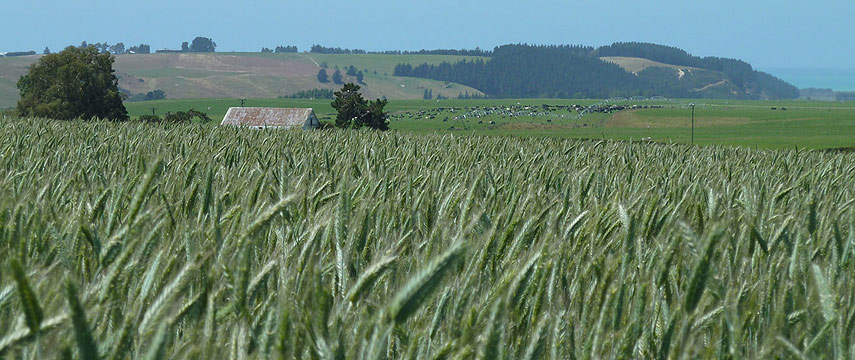Forage Cereal

The object of growing a Forage Cereal is to achieve as high a yield as possible and the simple truth as that over the winter months forage cereals will out yield ryegrasses in terms of dry matter production. Nowadays high yields of forage cereals can be achieved by using a wide range of forage cereal cultivars that are available in the market.
With correct management, forage cereals can produce significant volumes of high-quality dry matter in a short space of time. In such situations, trials indicate some forages can produce up to 30% more dry matter than annual ryegrass during the autumn/winter early-spring period.
Below are the various options of forage cereals available within New Zealand. These can either be used as Whole Crop Cereal Silage or a Green feed Crop:
Forage Cereal Sowing rates:
Use the lower recommended sowing rate for the earlier sowing’s (Autumn) and the higher recommended sowing rate for the later sowing dates (Spring).
Oats:
(Sowing Rates: 100 – 120kg/ha)
Forage oats provide a large amount of feed for a single grazing during winter. They can be planted in February for early-winter grazing, through to April – May in mild climates for late-winter grazing. Oats are also popular for growing between maize crops and harvesting for green silage in September, because they can produce 44% more than annual ryegrass and are up to $600 per hectare more profitable to grow. Oats are also planted in early spring to produce green-chop silage. This is an effective way to ensure adequate silage storage in districts where dry spring weather often restricts amounts of grass silage that can be harvested.
Cultivars:
Coronet
CROA146
Hattrick
Intimidator
Milton
Pre-cleaned Black oats
Pre-Cleaned white oats
Barley:
(Sowing Rates: 120 – 150kg/ ha)
Barley is planted in the winter or spring for whole-crop silage. It matures quicker than triticale, so becomes the preferred species when crops cannot be planted until mid to late-spring, or in dryland climates. Barley is also used as a steppingstone for establishing Lucerne.
Cultivars:
AT77 Forage Barley
Buttress
Fortitude
Garner
Laureate
Monty
Tavern
RGT Planet
Sy Transformer
Forage cereal/pea mixes:
(Sowing Rate: 200 kg/ha)
There are several commonly used mixes that involve forage cereals, these include, Oats & Peas or Vetches, Oats & Devour Annual ryegrass and Ryecorn & Italian ryegrass. All of these mixes fill different roles and for more information on this please contact us.
Cultivars:
Forage pea (60%) + Milton Oats (40%)
Forage Pea (40%) + Barley (60%)
Max forage pea (60%) + Intimidator Oats (40%)
Provider Peas (60%) + Intimidator Oats (40%)
Lupins:
(Sowing Rate: 60 – 80 per / ha in a mix or 180 – 200 kg/ha when sown alone)
Blue Lupins are a good weed suppressant and replace lost nutrients, especially nitrogen, in soil. Traditionally sown as a green manure, lupins also possess biofumigant properties. Plant in autumn and dig or work into the soil in late winter/early spring before flowering. The broken-down organic matter will then help to provide optimal soil conditions for spring planting.
Peas:
(Sowing Rates: 200 – 250kg/ha)
Peas can be added to spring-planted triticale for whole-crop silage. Peas are a good option to boost ME and quality of silage.
Cultivars:
Common brown peas
Forage peas
Max forage
Provider
Ryecorn:
(Sowing Rates: 130 – 150kg/ha)
Ryecorn is used in a wide variety of situations over a wide range of soil types, farm locations and fertility rangers. Ryecorn can be either autumn or spring sown.
Cultivars:
Mai Mai
Rahu
Triticale:
(Sowing Rates: 130 – 150kg/ha)
Triticale is a cross between wheat and ryecorn. Most autumn- planted triticale cultivars can only be grazed once, but DoubleTake is the only triticale that will reliably grow back after grazing, and can be grazed 1 – 2 times in winter and then kept for spring silage production. Triticale is also planted in winter and early-spring for whole- crop silage production, with no grazing.
Cultivars:
Bolt
Kudos
Wheat:
(Sowing Rates: 120 – 150kg/ha)
Wheat is can be planted for spring, autumn or winter sowing. Wheat normally requires high fertility and moisture levels so it is normally sowed in better producing paddocks.
Specialty Seeds are more than happy to recommend the most suitable cultivar for you and your region. Please click here to contact us about which forage cereal will best suit you.
Downloads
For your free complete Growing Guide for Whole Crop Cereal Silage please click here to go to the down loads page to get our Whole Crop Cereal Silage – Growing Guide
